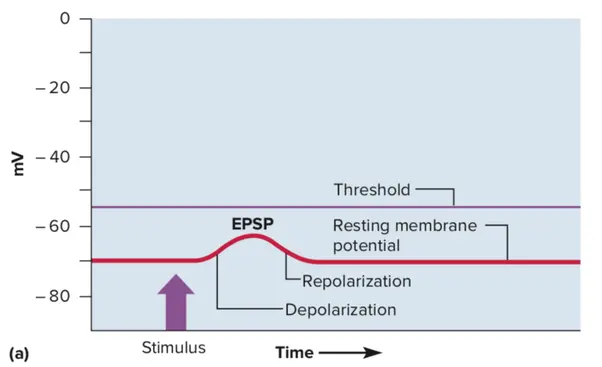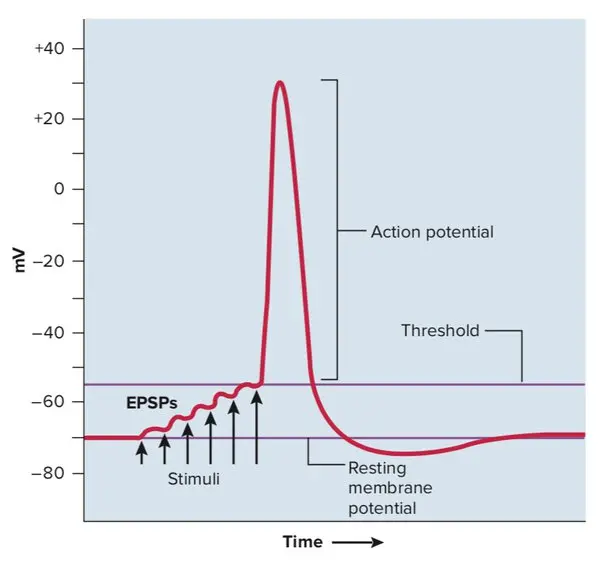Quick facts.
Substantial energy is only used when neurons fire.
Most neurons in the brain fire very rarely - they are only active when the information they represent is active.
The average firing rate of all neurons is once every two seconds.
If you take out the input neurons - which have to fire very regularily - this number would be even lower.
The quickest firing rate is once every 4ms.
There is a refractory period of about 3ms after every spike is emitted, during which incoming spikes are missed (leads to unreliable / erroneous summation).
Terminology
EPSP: Excitatory postsynaptic potential - A small positive voltage change caused by a neurotransmitter in an excitatory post-synaptic cell that makes it more likely to fire.
IPSP: Inhibitory postsynaptic potential - A small negative voltage change caused by a neurotransmitter in an inhibitory post-synaptic cell that makes it less likely to fire.
A neuron needs to receive multiple stimuli in quick succession in order to trigger an action potential.
A crude estimate for the required EPSPs is 30, however, EPSPs decay quickly after reaching their peak, so you would need more to account for that. Note that neurons further away send weaker signals - even many of them firing at once have a hard time getting a neuron to fire, however they can raise its “readiness”, which is a competitive advantage.
Neuronal voting processes
Whether the postsynaptic cell fires or not is a matter, in part, of whether EPSPs prevail (it fires) or IPSPs prevail (it doesn’t). It’s like a little cellular democracy “taking a vote” from all these input neurons, many of them saying “Fire! Fire! Fire! and many of them saying “Don’t fire! Don’t fire! Don’t fire!
To take a concrete example: Say you’ve been cooking on an electric stove top. You’ve turned the coil off so it’s not glowing red anymore. You accidentally touch it while you’re preparing your other food, and it’s hotter than you expected so you jerk your hand back. At various levels of your neuromuscular system, you had neurons voting Fire! to activate your flexor muscles to contract—even if the burner wasn’t actually hot enough to harm you. (Better safe than sorry.)
But then, you’re just brewed a cup of hot tea. You pick up that teacup to take a sip, and it’s actually hotter than that stove top was. Yet you put it to your lips and take that sip anyway. Your fingertips and your lips were sensing that unusual heat, yet at some level of the brain there are IPSPs inhibiting your withdrawal reflex so you don’t jerk back from the teacup or drop it. Those synapses were voting Don’t fire! because you had higher-level cerebral input voting on their “knowledge” that you’ve learned since childhood that this isn’t hot enough to harm you, and you were expecting it to be hot.
References
Energy-Efficient Neurons - Machine Learning Is Not Like Your Brain #8

